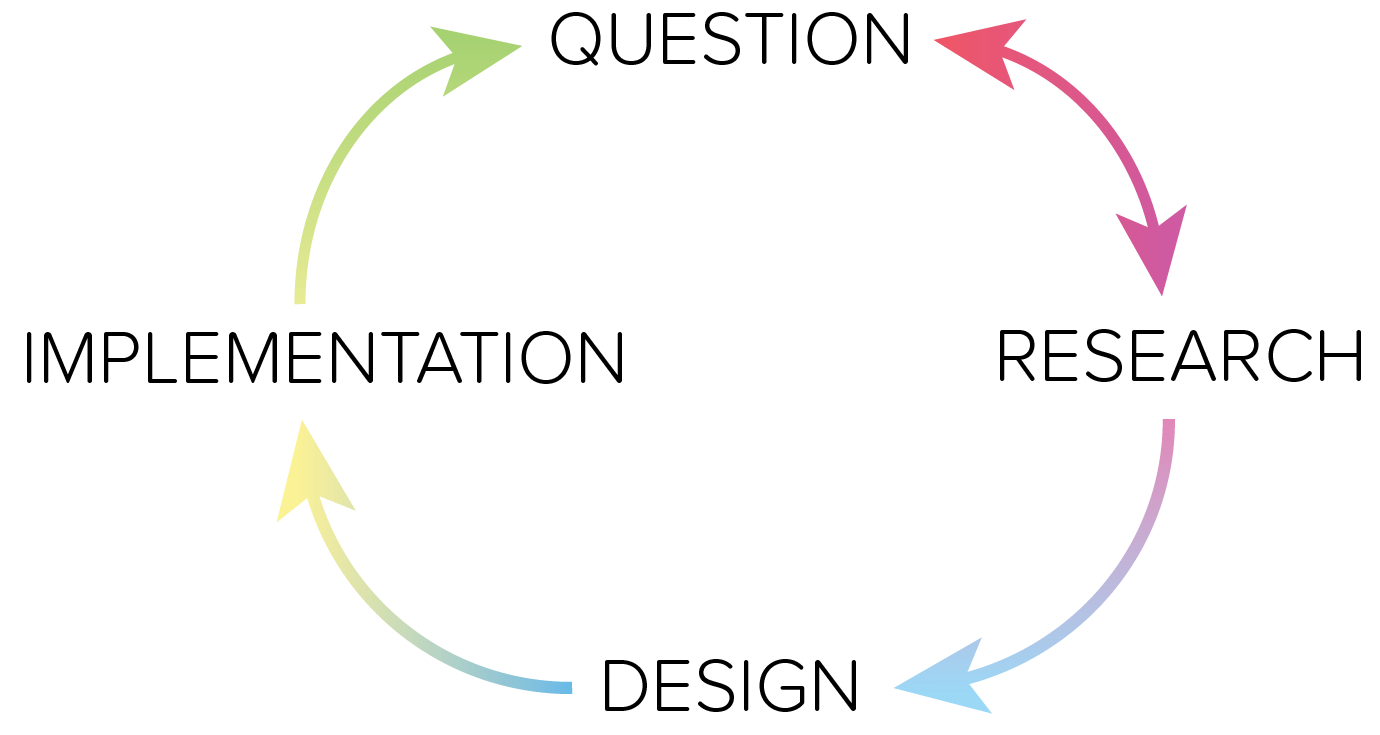

HUMAN PRACTICES GOLD
Our team has made human practices the foundation of our project to ensure that we fully understand and address current global issues. After contacting health care professionals around the world about their experiences with medicine access, we were able to identify specific issues in need of attention and discuss how we can use synthetic biology to address them. Through outreach efforts in our local community, we better understood the social and cultural controversies on GMO’s, medicine delivery, and how to address such historically sensitive subjects. Additionally, critically analyzing how our project disrupts existing processes made us think about why current methods of delivery are sometimes unsuccessful and how our project could address the problems while maintaining the benefits of existing methods. The knowledge we gained from these efforts became the driving force behind the design of our project.
 Developing a potential solution to a real-world problem is a largely dynamic process.
Developing a potential solution to a real-world problem is a largely dynamic process.
To make a lasting impact, we must first ask the right questions. We mentioned some important questions in the human practices silver page, which guided our project focus. With preliminary questions comes research, and with research comes design, and with design comes implementation. With preliminary questions comes research, which leads to design followed by implementation. Implementation leads to more questions, perpetuating the cycle of continuously addressing issues. Questions related to social and cultural implications, and of course, whether or not the project is reasonable or good for the world. Before we decided to pursue biosynthetic production of acetaminophen and vitamin B12, we explored bioengineering solutions to aspirin shortages and iron, vitamin A, and iodine deficiencies. This goes to show that our project emerged from many cycles of questions, research, and revisions.
On this page, we’ll discuss the more important questions we asked and the outreach, engagement, and research we did to answer them.
 News headlines from various reports of either stolen, blocked, or seized medical aid.
News headlines from various reports of either stolen, blocked, or seized medical aid.
Why Bugs Without Borders?
Or more specifically, why localized medicine production?
First and foremost: medicine is hard to ship[2]. Current efforts to ship medicine are unsustainable and unreliable, and rarely do the shipments make it to the intended destination. So why keep trying to ship the medicine synthesized in centralized large pharmaceutical companies? Instead, let’s ship the factory, once, and make the medicines locally in the regions that need them the most.
We hope to accelerate a growing movement to shift production of medicine delivery to the regions that need them. While it is important for us to develop the technology, a living factory synthesizing essential vitamins and medicines, it is also important for us to address aspects of the problem unsolvable with science alone. We hope to analyze and understand how our project fits into existing policies and attitudes surrounding poverty and malnutrition.
 Our approach: make connections.This is a map of the international correspondence conducted before choosing our project. This outreach became the motivation behind our research focus.
Our approach: make connections.This is a map of the international correspondence conducted before choosing our project. This outreach became the motivation behind our research focus.

Why is this an important issue?
We began our research by contacting health care professionals around the world, including professionals in Brazil, Palau, Bolivia, Venezuela, Perú, Haití, Nicaragua, and The Dominican Republic. We asked these doctors what ailments are most common and what medicines are most needed. Nearly all the practitioners mentioned inadequate access to vitamins, pain relievers, and other pharmaceuticals due to insufficient supply, high cost, and high demand. By analyzing World Health Organization data, we noticed that malnutrition and pain are consistent global problems, especially in remote regions where medicine is generally less accessible. Therefore, we chose to focus on the topics of vitamin deficiency and pharmaceutical shortages.

We spoke to various Global Medical Training (GMT) doctors during our outreach efforts. For example, Dr. Lubin (GMT - Dominican Republic/Haití) stated that antipyretics and anti-inflammatories are commonly needed, and that medicines for chronic treatments are highest in demand. Dr. Jacquelin Zubiaga (GMT - Perú) emphasized that anti-inflammatories, topical creams, and digestive medicine are most in demand. Dr. Zubiaga added that vitamins in Perú are expensive and highly sought-after, so a large part of what Dr. Zubiaga does is to educate patients on what specific vitamins do and what symptoms they address. This calls to attention that educating patients is just as important as meeting thier needs for medicines.
Why cyanobacteria?
Conventional production of pharmaceuticals is costly, requiring a huge amount energy and laboratory equipment[1]. The use of cyanobacteria as a host to produce pharmaceuticals is a promising idea with the potential to fundamentally change the pharmaceutical industry; they require water, solar energy, atmospheric CO2, and minimal nutrients to proliferate. Using these abundant resources, cyanobacteria can produce a broad variety of vitamins and essential nutrients[3, 4]. Additionally, the organisms are inexpensive and easy to cultivate, proving to be a model specimen for biosynthesis of vitamins and medicines.
Furthermore, health care is outrageously expensive and often culturally invasive when forced upon people. For example, the Marshallese people who were eradicated from their homeland due to the extensive nuclear testing conducted by the U.S. Government in the 1940s and 50s have faced insurmountable difficulty coping with and affording modern health care[5].
 Image sourced from NY Times, "For Pacific Islanders, Hopes and Troubles in Arkansas"
Image sourced from NY Times, "For Pacific Islanders, Hopes and Troubles in Arkansas"
Worshipers gathered on a Sunday at Faith Full Gospel Marshallese Church.
Part of the goal was to provide a new vitamin and medicine delivery approach that could be integrated more easily into already accepted diets or customs. The cultural barriers to adequate medical treatment by western standards was apparent when federal aid was used to treat the Marshallese people. By using an edible, nutrient dense microorganism, that can be incorporated into a variety of dishes, we hope to ease the process of cultural acceptance and integration.
The treatment of the Marshallese people was an important case study for our project. We gave two guest lectures at Leland High School in San Jose, California with the hopes of initiating a conversation about the consequences and rewards of genetic engineering and the ethical implications involved. Besides offering our team the opportunity to reach out to a local high school to talk about our project and our motivation to proceed with the production of a microbial pharmacy, this case study also reminded us that malnutrition and inadequate healthcare and resources can oftentimes be a struggle very close to home. Our involvement with the St. Francis Soup kitchen furthered our understanding of our local community’s relationship with inadequate access to healthcare and essential resources. We aim to initiate a movement to localize medicine production that can alleviate the everyday struggles of both our global and local communities.
To learn more about the outreach we did within our own community, take a look at our education and public engagement page here!
 Image sourced from Ethanol Producer Magazine, "Green Expectations"
Image sourced from Ethanol Producer Magazine, "Green Expectations"
Large scale photosynthesis-driven bioreactors can be productive in locations where traditional crops could not otherwise be grown.
How does this work affect the world?
Bugs Without Borders is creating a radical solution to insufficient access to medicine. Using the World Health Organization data[6] and contacting health care professionals in other countries, we noticed that malnutrition and pain are consistent global problems, especially in remote regions where medicine is generally less accessible.
Our project targets these problems in a powerful new way, by allowing healthcare professionals to produce multi-vitamins and acetaminophen on site, disrupting the normal processes of these multi-billion dollar industries. Growing medicine and vitamins locally will revolutionize the pharmaceutical market by making cheaper, more abundant supplies and allowing cottage industries to emerge using pool-style production, rather than chemical factories. Our solution, when integrated, provides a new tool for global health, absorbing CO2 and creating a new industry in the process. We are applying human-centric bioengineering to address malnutrition and medicine shortages in an elegant and sustainable way.
To find out more about how our project can be upscaled and implemented in various settings, take a look at how we apply our design!


